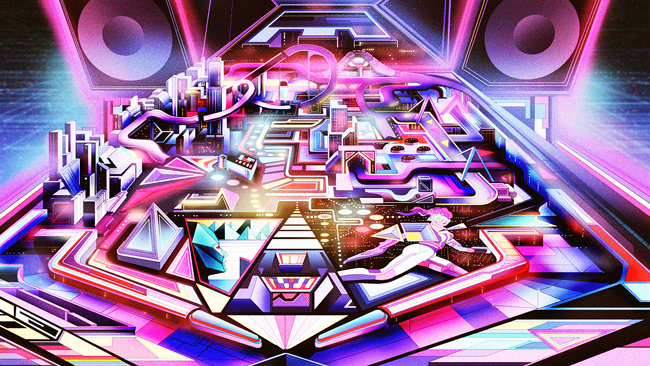
From Hellenistic passageways to neon-clad strip malls, from turn of the centuryPenny Arcades to 1970’s – 90’s gaming dens, The Arcadehas a long and complex history. In his unfinished proto-postmodern Arcades Project(Passagenwerk) of 1927-40, Walter Benjamin pronounced that the arcades of Haussmann’s Paris were the most significant architectural form of the C19th, being synchronous interio-exterior incubators for the dynamics of urban life. In 1971 the first (pre-Pong) video game arcade machine ‘Computer Space’ was developed, inspiring numerous other machines that would unite into the great ludic social condenser of the video game arcade. Today this typology sees a resurgence with Virtual/VR Arcades emerging in cities across the globe. Arcades continue to evolve as spaces of amusement, whilst maintaining (and often relishing in) their retrograde and low code qualities. Following Benjamin’s lead, are these new proprioceptive playgrounds a signpost for future urban life?
The broader themes of the unit this year will be mixed reality, simulation and its interplay with modelling. The mixing of realities in our ‘arcades’ however will not be limited to the current conventions of Mixed Reality (MR) – we will look to speculate on future conceptual toolkits for mixing, hybridizing and synergizing a multitude of spaces, realities, regimes and objects across the full gamut of the mixed reality spectrum and beyond, in order to create chimeric and chiasmatic multimodal architectures that ask more of the human sensoria. We will interrogate texts by thinkers such as Baudrillard, Carpo and specifically Delanda – whose recent Philosophy and Simulation: The Emergence of Synthetic Reasonwill be a key text – along with texts on the histories and theories of the architectural model.
The unit will continue to develop projects through the processes of modelling and the outputting of models. We are interested in the architectural opportunities that emerging modelling processes and technologies afford, such as deep learning generative design and intuitive AI, and (in relation to mixed reality;) interreal physics and visuo-haptic models. We also take an interest in the latest theories of the model, such as Brejzek and Wallen’s concept of the autonomous model, and we aim towards proposing new model languages and methods (physical, immaterial, co-existing and otherwise). We will also explore models of thought, both as ways of understanding the world, and as devices to aid speculative work. At its most ambitious, Unit 14 is interested in how modelling has the capacity for both worldbuilding(the construction of an imagined worldspace) and Worldmaking(or Cosmopoiesis, the design and making of the actual world): architectural projects as thought experimentsof vast scales and complexities.
We will begin the year by materializing a selection of thought experiments (types of thought models) that question notions of simulation and reality. After which, year 1 students will be asked to consider ‘the Arcade in the C21st’ as a starting point for their building programme. Year 1 students will research arcade sites either side of Piccadilly – the opulent arcades of St.James’ to the west, and the not-so-opulent arcades of Soho to the East – before working up proposals for an adjacent infill site.
Final year students will develop their projects based on their individual themes and agendas.
This year the unit trip will be decided upon through a group agreement – the arcades of Paris or the arcades of Tokyo?
Image: Kilian Eng, Tilt